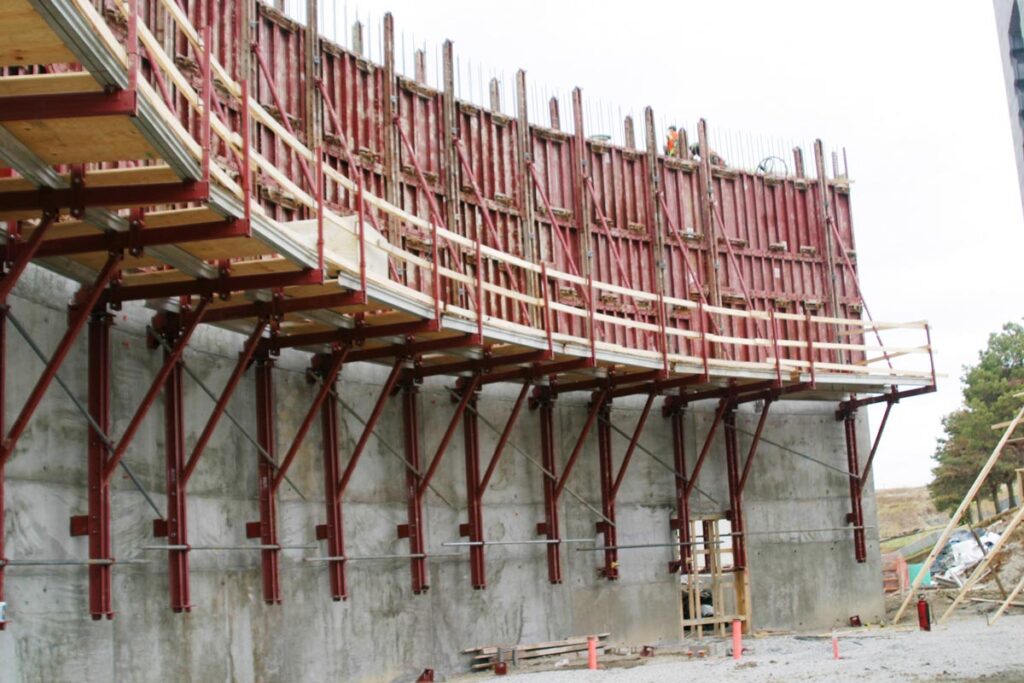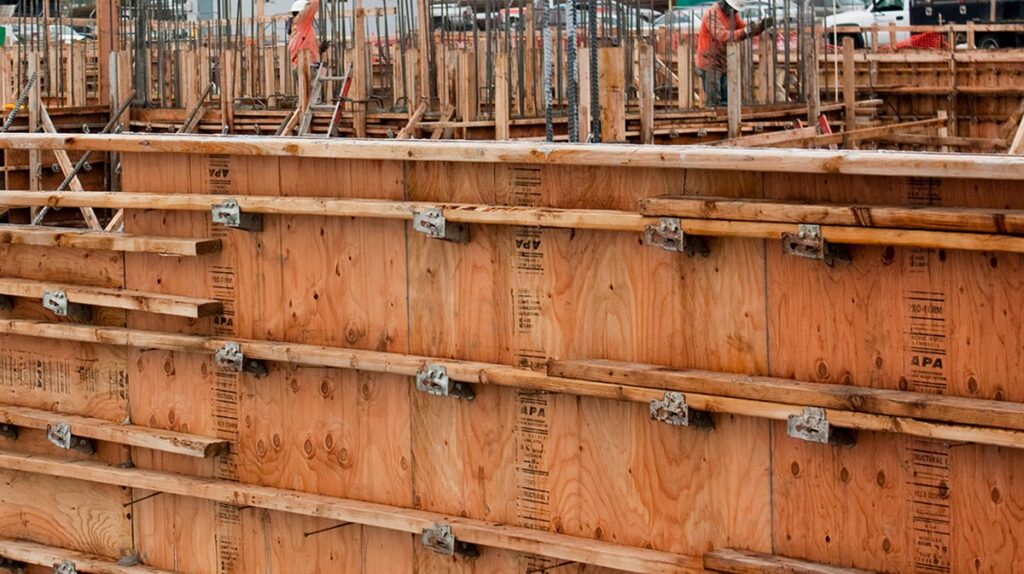Formwork plywood is a crucial component of sustainable building practices, playing a significant role in the construction industry. Understanding its importance and benefits can help professionals make informed decisions and contribute to a greener future.
Understanding Formwork Plywood
Formwork plywood is a type of engineered wood that is specifically designed for use in concrete plywood applications. It serves as the temporary mold or framework into which concrete is poured to create structures such as walls, columns, slabs, and beams. This versatile material provides essential support during the construction process, ensuring the concrete cures properly and maintains its desired shape.
The Basics of Formwork Plywood
Formwork plywood is typically made from multiple layers of wood veneers, which are bonded together using high-strength adhesives. The layers are cross-laminated to enhance the plywood’s strength and dimensional stability. The veneers used in formwork plywood are usually sourced from sustainable forests, ensuring responsible wood procurement practices. Click here to read the importance of certification and standards in formwork plywood.
Key Features of Formwork Plywood
Formwork plywood exhibits several key features that make it an ideal choice for sustainable construction:
Durability
Formwork plywood is designed to withstand the rigors of construction activities, including exposure to moisture, chemicals, and mechanical stress.
Reusability
Unlike traditional formwork materials like timber, formwork plywood can be reused multiple times, reducing the demand for new materials and minimizing waste.
Dimensional Stability
Cross-laminated construction ensures that formwork plywood maintains its shape and dimensions, eliminating the risk of deformation during concrete pouring.
Surface Finish
Formwork plywood produces smooth concrete surfaces, reducing the need for additional finishing materials and labor.
But let’s delve deeper into the world of formwork plywood and explore some additional aspects that make it a preferred choice in the construction industry.
One of the significant advantages of formwork plywood is its versatility. It can be easily cut and shaped to fit various formwork designs, allowing for flexibility in construction projects. Whether you need to create intricate architectural elements or simple straight forms, formwork plywood can adapt to your requirements with ease.
Furthermore, formwork plywood offers excellent strength-to-weight ratio, making it a lightweight yet robust option for formwork applications. Its lightweight nature not only makes it easier to handle and transport but also reduces the overall load on the structure during construction.
Another noteworthy feature of formwork plywood is its ability to resist warping and swelling. The cross-laminated construction provides exceptional stability, ensuring that the plywood maintains its shape even when exposed to moisture or changes in temperature. This dimensional stability is crucial in achieving accurate and precise concrete structures.
Additionally, formwork plywood is known for its high-quality surface finish. The smooth and even texture of the plywood translates into a polished concrete surface, reducing the need for extensive finishing work. This not only saves time and labor but also enhances the aesthetic appeal of the final structure.
In conclusion, formwork plywood is a reliable and sustainable choice for concrete formwork applications. Its durability, reusability, dimensional stability, and excellent surface finish make it an indispensable material in the construction industry. With its versatility and exceptional performance, formwork plywood continues to play a vital role in shaping the world we live in.

The Role of Formwork Plywood in Construction
Formwork plywood plays a crucial role in the construction of building structures, providing support and shaping the concrete elements. Whether used in residential, commercial, or industrial projects, it offers numerous advantages that contribute to sustainable building practices.
Formwork Plywood in Building Structures
Formwork plywood is widely used in various types of building structures, including walls, columns, slabs, and beams. Its versatility allows it to be easily customized and adjusted to meet specific project requirements. This flexibility results in efficient and precise construction, reducing material waste and labor costs.
Advantages of Using Formwork Plywood
The use of formwork plywood brings several advantages to construction projects:
Speed and Efficiency
Formwork plywood enables fast assembly and disassembly, helping to accelerate the construction process and meet project deadlines.
Cost Savings
The reusability of formwork plywood significantly reduces material costs over multiple construction projects, making it a cost-effective choice in the long run.
Improved Quality
The dimensional stability and smooth finishing of formwork plywood result in high-quality concrete structures, ensuring long-term durability and aesthetics.
Reduced Environmental Impact
By minimizing material waste and optimizing construction efficiency, formwork plywood helps reduce the environmental impact associated with the building industry.
One of the key advantages of using formwork plywood is its ability to withstand various weather conditions. This makes it an ideal choice for construction projects in areas with extreme temperatures or high humidity. The plywood’s moisture-resistant properties ensure that it remains structurally sound, even in challenging environments.
Furthermore, formwork plywood offers excellent dimensional stability, meaning it maintains its shape and size over time. This is crucial for achieving precise and accurate concrete structures, as any changes in the formwork could lead to inconsistencies in the final product. With formwork plywood, construction professionals can have confidence in the reliability and integrity of their projects.
Sustainability and Formwork Plywood
In addition to its practical benefits, formwork plywood also contributes to sustainability in the construction sector.
When it comes to sustainability, formwork plywood stands out as a champion in the construction industry. Not only does it provide structural support during concrete pouring, but it also plays a crucial role in environmental conservation efforts. The eco-friendly nature of formwork plywood is a result of meticulous manufacturing processes that prioritize sustainability at every step.
Eco-friendly Aspects of Formwork Plywood
Formwork plywood is manufactured using sustainable practices and responsibly sourced materials. The utilization of certified wood from well-managed forests ensures the preservation of ecosystems and biodiversity. Moreover, the production process minimizes energy consumption, reduces greenhouse gas emissions, and avoids the use of harmful chemicals.
Furthermore, the sustainable journey of formwork plywood does not end with its production. Even after its useful life in construction projects, formwork plywood can be repurposed for various applications, such as crafting furniture or creating decorative elements. This versatility adds another layer to its eco-friendly profile, extending its lifespan and reducing overall environmental impact.

Formwork Plywood and Waste Reduction
By promoting reusability, formwork plywood significantly reduces construction waste. Traditional formwork materials, such as timber, often end up as waste after a single use. In contrast, formwork plywood can be continuously recycled in different projects, minimizing the need for new materials and reducing landfill burden.
Moreover, the durability of formwork plywood ensures that it can withstand multiple uses without compromising its structural integrity. This longevity not only saves costs for construction companies but also contributes to a more sustainable construction industry by reducing the demand for frequent material replacements.
The Future of Sustainable Building with Formwork Plywood
As sustainability continues to gain importance in the construction industry, innovative solutions are being developed to enhance the role of formwork plywood.
Innovations in Formwork Plywood
Researchers and manufacturers are constantly working on improving the performance and sustainability of formwork plywood. Innovations include the development of stronger and more durable plywood variants, as well as the integration of recycled materials into the manufacturing process.
One notable advancement in formwork plywood technology is the introduction of bio-based adhesives that replace traditional synthetic adhesives. These bio-based adhesives not only enhance the sustainability of the plywood but also improve its overall performance, making it more resistant to moisture and temperature variations.
Formwork Plywood in Green Building Standards
Formwork plywood is increasingly being recognized and incorporated into green building standards and certifications. Its reusability, eco-friendly features, and waste reduction capabilities align closely with the principles of sustainable construction. By using formwork plywood, builders and developers can contribute to achieving higher green building ratings and meet the growing demand for environmentally conscious structures.
Moreover, the versatility of formwork plywood allows for intricate designs and shapes to be created with ease, providing architects and designers with more creative freedom while maintaining sustainable practices. This flexibility in formwork plywood usage opens up new possibilities for innovative and visually striking sustainable building designs.
In conclusion, formwork plywood is an essential component in sustainable building practices. Its durability, reusability, dimensional stability, and eco-friendly aspects make it a preferred choice for construction professionals. By incorporating formwork plywood into projects and embracing its benefits, the construction industry can make significant contributions to a greener future.
Other resources: Stylish and Space-Saving Sofa Beds for Your Home

